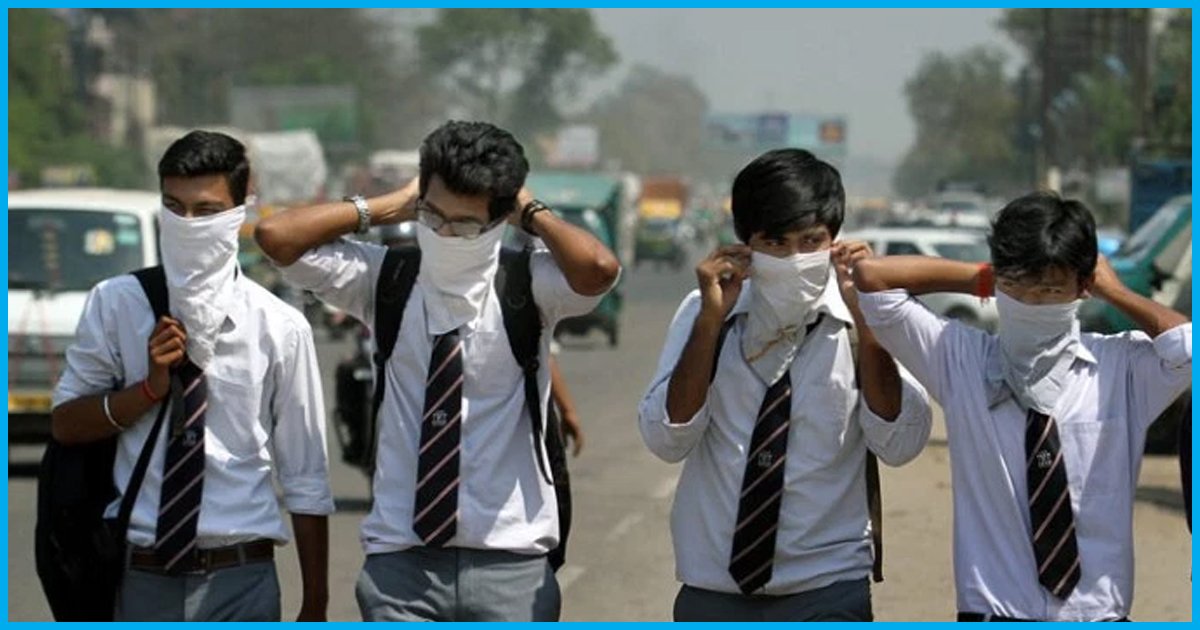
Delhi: Carcinogenic Particulate Matter 70 Times Smaller Than Human Hair Found In The Air
3 Aug 2017 8:09 AM GMT
Editor : Sudhanva Shetty Shetty
Writer, coffee-addict, likes folk music & long walks in the rain. Firmly believes that there's nothing more important in a democracy than a well-informed electorate.
A recent study has found the presence of the ultrafine and toxic particulate matter PM1, the most dangerous particulate matter and the smallest, in Delhi’s already polluted air.
The Lodhi Road monitoring station of the System of Air Quality and Weather Forecasting And Research (SAFAR) under the Ministry of Earth Sciences recorded the average volume of PM1 during summer, winter and the monsoon at about 46, 49 and 20 micrograms per cubic metres, respectively.
PM1 is 70 times finer than a strand of human hair. Measuring barely 1 micron in diameter (1 micron is about a thousandth of a millimetre), PM1 can easily enter the bloodstream or the lungs and cause serious ailments in very little time. It is also difficult to detect and resolve.
The safe standards of PM1 have not been defined yet, nationally or globally, and thus potentially harmful effects have not been documented.
Dr Dipankar Saha, additional director and head of the Air Laboratory at the CPCB told Hindustan Times, “PM1 is a major product of vehicular combustion. Roads in and around the Lodhi Road area like other parts of Lutyens’ Delhi see a huge flow of vehicles. This might be the reason behind the prevalence of this finer particulate matter. It also depends on where the station is located, the dispersion capacity, meteorological factors, among others.”
What is particulate matter?
Particulate matter (PM), or particulates, are microscopic solid or liquid matter suspended in Earth’s atmosphere. Sources of particulate matter can be natural or anthropogenic. They have impacts on climate and precipitation. PM also adversely affect human health.
The IARC and the WHO designate airborne particulates a Group 1 carcinogen. Particulates are the deadliest form of air pollution due to their ability to penetrate deep into the lungs and blood streams unfiltered, causing permanent DNA mutations, heart attacks, and premature death.
In 2013, a Lancet study involving 312,944 people in nine European countries revealed that there was no safe level of particulates and that for every increase of 10μg/m3 in PM10 (PM of diameter 10 micron, smaller than PM1), the lung cancer rate rose 22%. The smaller PM2.5 were particularly deadly, with a 36% increase in lung cancer per 10μg/m3 increase as it can penetrate deeper into the lungs.
All forms of PM are toxic to human health. The adversity of impact escalates as the diameter of the particulates decreases. Continuous exposure to high concentrations of small particulates can lead to premature deaths. In fact, according to the State of Global Air Report 2017, over one lakh premature deaths in India in 2015 can be attributed to PM 2.5 pollution. Moreover, continuous exposure to PM emissions can negatively affect the respiratory tract and impair the lung function.
Delhi’s troubling tryst with rampant air pollution
Enough scientific proof has been cited that shows air pollution in Delhi has aggravated due to the increase in the number of vehicles plying on the roads. The number of vehicles has tripled in the last five years to 8.9 million, and this is one of the biggest contributors to toxicity in Delhi’s air. In 1975, vehicular air pollution was just at 2.35%, and in next 40 years, it rose to about 60%.
Burning of crackers during Diwali has however overtaken vehicular pollution. Not only Delhi, but the entire country’s pollution level was alarmingly high during the Diwali weekend. This is certainly because of a combination of adverse factors like slow wind speed and moisture in the air, a major hindrance in the dispersion of suspended pollutants.
However, a recent image by NASA has revealed that more than vehicular pollution and Diwali celebration, burning of crop stubble is considerably impacting the pollution levels. Farmers in neighbouring Punjab and Haryana have been setting fire to paddy stubble in their fields after cultivating the crop as part of the slash and burn process. As per a New York Times report, farmers are burning around 32 million tons of leftover straw.
Smoke from the crop fires blowing across the northern plains into New Delhi accounts for about one-quarter of the most dangerous air pollution levels in the winter months.
The governments at the centre and the state should take immediate action
Emissions from vehicles, suspended roadside dust, industries, thermal power plants, construction activities etc have long been identified by the government as main sources of air pollution in urban India, especially metropolitan cities like Delhi.
To curb air pollution, governments have taken steps, no doubt, but much more needs to be done.
- Implementation of the Comprehensive Policy for Abatement of Pollution,
- supply of improved auto–fuel,
- tightening of vehicular and industrial emission norms,
- mandatory environmental clearance for specified industries,
- management of municipal, hazardous and bio-medical wastes,
- promotion of cleaner technologies,
- strengthening the network of air quality monitoring stations,
- assessment of pollution load,
- source apportionment studies,
- preparation and implementation of action plans for major cities and critically polluted areas,
- more public awareness,
- higher fines for violation of pollution norms etc.
These are some of the fields the government needs to focus on and escalate action on to save Delhi’s atmosphere before a major public health crisis begins.
 All section
All section













